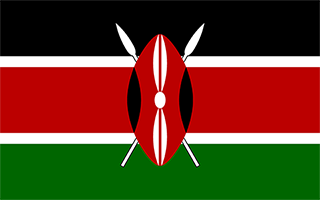Facts and Data
Webpages:
Official Unesco Page
Basis Data:
Unesco World heritage since: 2008
Size of heritage: 1,538 ha
Coordinates:
Longitude: 39,596°
Latitude: -2,068°
Summary
The Mijikenda Kaya Forests consist of 11 separate forest sites spread over some 200 km along the coast containing the remains of numerous fortified villages, known as kayas, of the Mijikenda people. The kayas, created as of the 16th century but abandoned by the 1940s, are now regarded as the abodes of ancestors and are revered as sacred sites and, as such, are maintained as by councils of elders. The site is inscribed as bearing unique testimony to a cultural tradition and for its direct link to a living tradition.
Location on Map
Show bigger map on Openstreetmap
Introduction
The Sacred Mijikenda Kaya Forests, located in the Coast Province of Kenya, are a UNESCO World Heritage site renowned for their cultural and ecological significance. These forests are home to the Mijikenda people, who have inhabited the region for centuries and consider the forests sacred. The site comprises eleven separate forested areas, known as kayas, each with its own distinct history and cultural importance.
History
The Mijikenda people, consisting of nine distinct ethnic groups, have a rich cultural heritage deeply rooted in the Sacred Mijikenda Kaya Forests. The kayas served as spiritual and cultural centers for the community, where rituals, ceremonies, and initiation rites took place. These forests were also places of refuge during times of conflict and played a crucial role in the preservation of Mijikenda traditions.
The kayas have been inhabited since the 16th century, and their significance has been passed down through generations. The Mijikenda people believe that the forests are inhabited by ancestral spirits, and they continue to perform rituals and ceremonies to honor and communicate with their ancestors.
Current State
The Sacred Mijikenda Kaya Forests face numerous challenges that threaten their cultural and ecological integrity. Deforestation, encroachment, and unsustainable land use practices pose significant threats to the site. The expansion of agriculture, settlements, and infrastructure development in the surrounding areas has led to increased pressure on the forests.
To address these challenges, the Kenyan government, in collaboration with local communities and international organizations, has implemented various conservation and management initiatives. These efforts aim to protect the forests while promoting sustainable development and community involvement.
One of the key strategies employed is community-based forest management. Local communities are actively involved in decision-making processes and are responsible for the conservation and sustainable use of the forests. This approach not only empowers the Mijikenda people but also ensures the preservation of their cultural heritage.
Additionally, awareness campaigns and educational programs have been implemented to promote the importance of the Sacred Mijikenda Kaya Forests among the local population and visitors. These initiatives aim to foster a sense of pride and ownership among the communities, encouraging them to actively participate in the conservation efforts.
Furthermore, the site benefits from legal protection under the Kenyan Forest Act and the National Museums and Heritage Act. These legislations provide a legal framework for the preservation and management of the forests, ensuring their long-term sustainability.
Despite these conservation efforts, the Sacred Mijikenda Kaya Forests still face ongoing challenges. Continued monitoring, enforcement of regulations, and sustainable tourism practices are crucial to safeguarding the site's cultural and ecological values.
In conclusion, the Sacred Mijikenda Kaya Forests in Kenya's Coast Province are a UNESCO World Heritage site of immense cultural and ecological significance. The forests have served as spiritual and cultural centers for the Mijikenda people for centuries. While facing threats from deforestation and encroachment, the site benefits from community-based forest management, legal protection, and conservation initiatives. Continued efforts are necessary to ensure the preservation of this unique cultural landscape for future generations.
